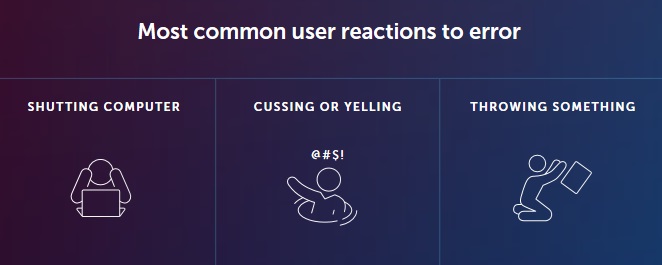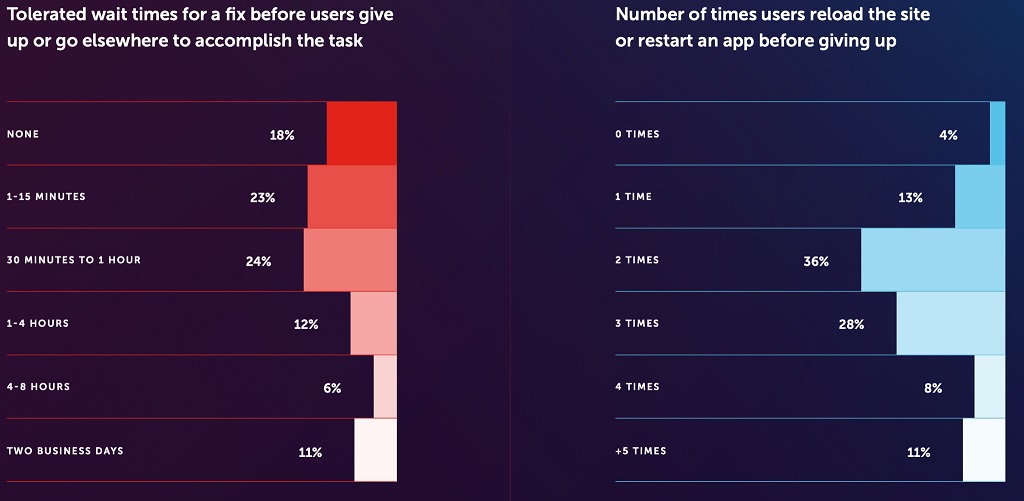One idea those in the DevOps world have been preaching for years is the importance of customer experience. Build a product that will delight your customers and they will keep coming back, or so the conventional wisdom goes. On the flip side, deliver poor CX and people will vote with their feet (out the digital door).
But just how damaging can it be for a brand when a consumer discovers a bug on a company's website or mobile app?

This information can be hard to quantify, but it's exactly what the new Sauce Labs report, Every Experience Matters is here to explain.
Most developers don't realize how closely their work is tied to a brand's success and revenue stream, but in a world where consumers have so many choices, user expectations can make or break a transaction. Today we'll look at a few of the insights that came from the report.
Every brand is a digital brand. Every company, regardless of industry, has a web presence that represents the primary way users engage with that company. Any time we browse a web page or mobile app, there is the possibility of a coding error crashing the site or lowering its performance in a way that a user would notice.
How common are these bugs?
Nearly a quarter of consumers (23%) say they encounter an error or experience issue that keeps them from accomplishing a task online at least once a day. In other words, millions of consumers are logging on to shop, pay bills, connect with people, and other important daily tasks, only to encounter a problem that stops them in their tracks. These bugs lead to abandoned carts, negative reviews and a loss of brand equity. Eventually, these errors start to negatively impact a company's reputation and destroy trust.
Patience may be a virtue, but it's also one that most consumers lack: when we drill into the data, the results are alarming. Almost one in five consumers (18%) will immediately abandon a transaction the moment they encounter an error. The majority of them will just go directly to your competition. 64% are a bit more forgiving and they will give you the benefit of the doubt by refreshing your page 2-3 times before eventually giving up, but the bottom line here is that your customer's time is money. Without swift resolution, they have no problems taking their business elsewhere.

To make matters worse, consumers aren't shy about sharing their negative experiences. About half of those surveyed (49%) reported discussing negative experiences with family and friends meaning that errors and challenges can spread to potential customers via word of mouth. A quarter (25%) took the extra step of writing a negative review for the world to see. (Just sorting by new on Reddit will show plenty of these.) Most concerning were the 20% that said after experiencing one error on a brand's website or app, they would leave as a customer forever.
These statistics may sound daunting, but all they really do is confirm our instincts that consumers are impatient, and our users aren't too forgiving. The easy fix for a developer is to catch errors before they are released to the masses, in the form of an aggressive testing strategy.
Whether a developer operates in a low-code environment or relies heavily on automation testing, there are tools that can put your customer first and set you up for success. Test features like API testing and Error Monitoring can catch bugs earlier in the SDLC and help devs and testers catch problems quickly and save the company money. In a DevOps world increasingly obsessed with speed, we must remember the importance of quality. To your users, every experience matters, so we should always be mindful to put our best foot forward and protect brand reputation at all costs.
The Latest
The use of hybrid multicloud models is forecasted to double over the next one to three years as IT decision makers are facing new pressures to modernize IT infrastructures because of drivers like AI, security, and sustainability, according to the Enterprise Cloud Index (ECI) report from Nutanix ...
Over the last 20 years Digital Employee Experience has become a necessity for companies committed to digital transformation and improving IT experiences. In fact, by 2025, more than 50% of IT organizations will use digital employee experience to prioritize and measure digital initiative success ...
While most companies are now deploying cloud-based technologies, the 2024 Secure Cloud Networking Field Report from Aviatrix found that there is a silent struggle to maximize value from those investments. Many of the challenges organizations have faced over the past several years have evolved, but continue today ...
In our latest research, Cisco's The App Attention Index 2023: Beware the Application Generation, 62% of consumers report their expectations for digital experiences are far higher than they were two years ago, and 64% state they are less forgiving of poor digital services than they were just 12 months ago ...
In MEAN TIME TO INSIGHT Episode 5, Shamus McGillicuddy, VP of Research, Network Infrastructure and Operations, at EMA discusses the network source of truth ...
A vast majority (89%) of organizations have rapidly expanded their technology in the past few years and three quarters (76%) say it's brought with it increased "chaos" that they have to manage, according to Situation Report 2024: Managing Technology Chaos from Software AG ...
In 2024 the number one challenge facing IT teams is a lack of skilled workers, and many are turning to automation as an answer, according to IT Trends: 2024 Industry Report ...
Organizations are continuing to embrace multicloud environments and cloud-native architectures to enable rapid transformation and deliver secure innovation. However, despite the speed, scale, and agility enabled by these modern cloud ecosystems, organizations are struggling to manage the explosion of data they create, according to The state of observability 2024: Overcoming complexity through AI-driven analytics and automation strategies, a report from Dynatrace ...
Organizations recognize the value of observability, but only 10% of them are actually practicing full observability of their applications and infrastructure. This is among the key findings from the recently completed Logz.io 2024 Observability Pulse Survey and Report ...
Businesses must adopt a comprehensive Internet Performance Monitoring (IPM) strategy, says Enterprise Management Associates (EMA), a leading IT analyst research firm. This strategy is crucial to bridge the significant observability gap within today's complex IT infrastructures. The recommendation is particularly timely, given that 99% of enterprises are expanding their use of the Internet as a primary connectivity conduit while facing challenges due to the inefficiency of multiple, disjointed monitoring tools, according to Modern Enterprises Must Boost Observability with Internet Performance Monitoring, a new report from EMA and Catchpoint ...





